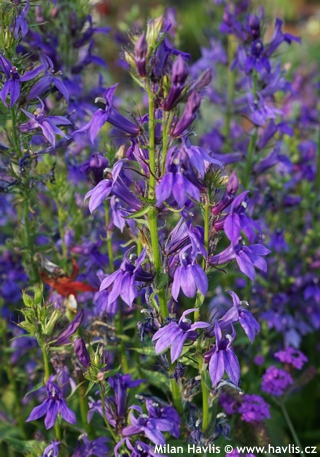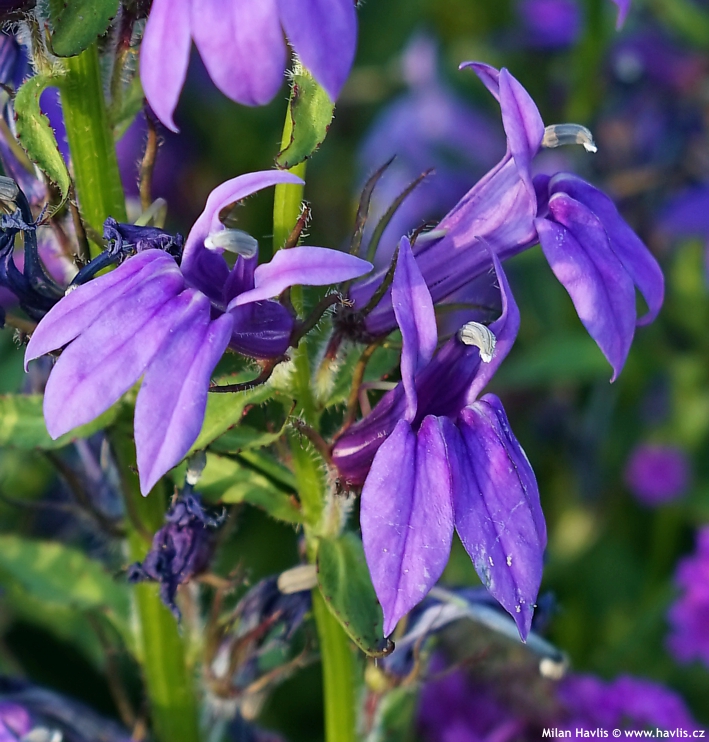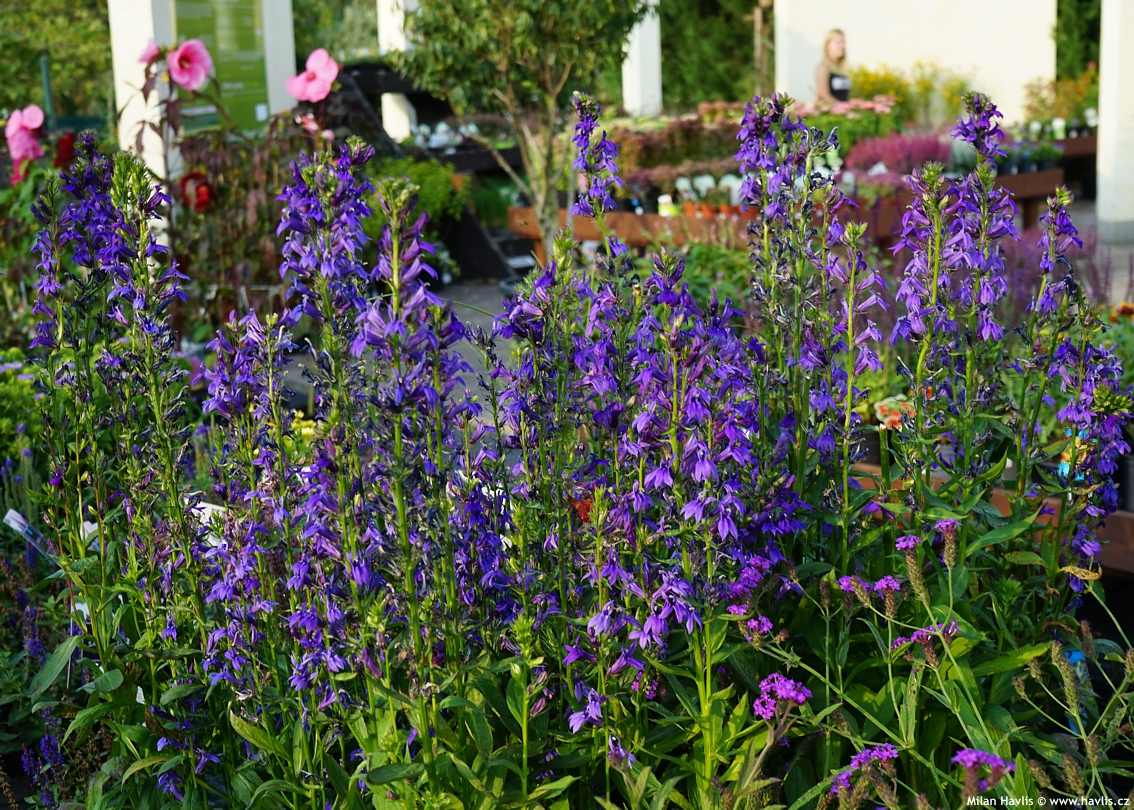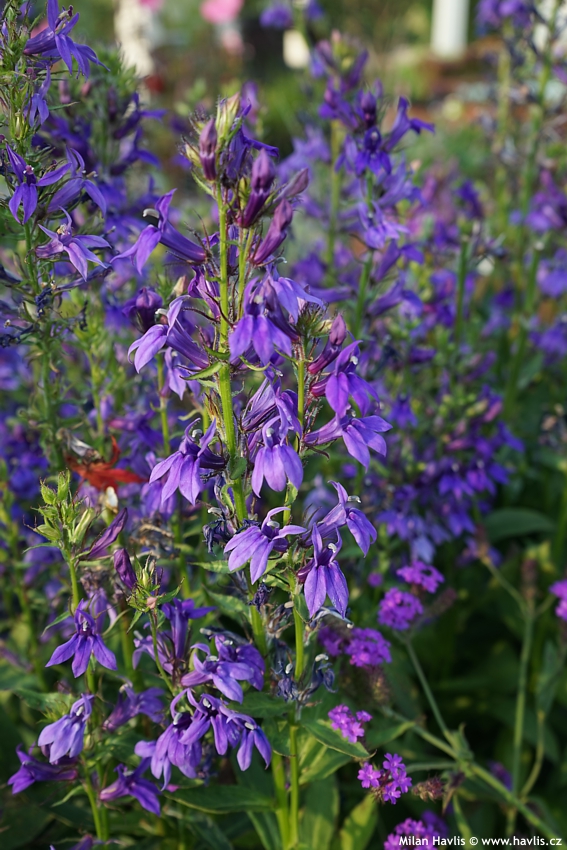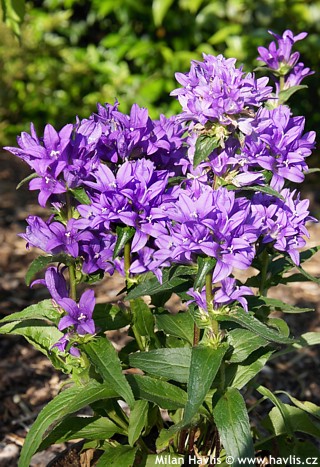Lobelia x speciosa 'FAN BLUE' perennial lobelia, cardinal flower
size/type
mid-sized perennial,mid-sized perennial
usual height
0,5-0,7m
usual width
0,3-0,4m
leaves
deciduous broadleaf
colour of leaves
flowers
showy
colour of flowers
blooming time
August-September
location
full sun
USDA zone (lowest)
7 (down to -23°C)
winter protection
for zone 5+6

for zone 7

categorized
Lobelia
Lobelia, also called cardinal flower is a genus of at least 415 species known to date. Owing to this, many botanist prefer listing it under its own family lobeliaceae rather than campanulaceae where the plants belonged to formerly. Lobelias are found in moist lands and marshes all over the temperate and tropical parts of the world, most often in all Americas. They are grown as annuals or short lived perennials with limited hardiness. Luckily, there a few hybrids which broke this rule. Just like lobelia x speciosa which is an interspecific cross of more species (l.siphilitica, l.fulgens, l.cardinalis). It was first described by an English botanist Robert Sweet (1783-1835), and now hybridizers breed new and improved varieties with longer life and better hardiness.Description of the plant:
FAN BLUE is a perennial lobelia variety from the FAN series bred and introduced by German breeding company Benary. It produces rather tall, strictly upright, fleshy stems of about 60-70 cm atop which appear erect racemes composed of tubular, 2-lipped, deep violet blue flowers. Flowering begins in late August or early August and usually continues until late September. Leaves are lance-shaped, medium green.Lobelia needs constantly moist or partially wet ground and no drought - it dies quickly, especially during dry winters. It loves fertile, humus rich soil of any pH, and full sun. It will grow in partial shade, too, but as a long-day plant it will become short-lived with reduced sunlight. Regular feeding is recommended in poor soils, from June until August. The plant contains toxins, and releases sap when cut that may irritate skin or cause allergies. Hardiness tested down to -22°C, and expected to -24°C (USDA zone 6).
Last update 28-10-2020
QUICK PRICE OVERVIEW
CURRENTLY SOLD OUT












